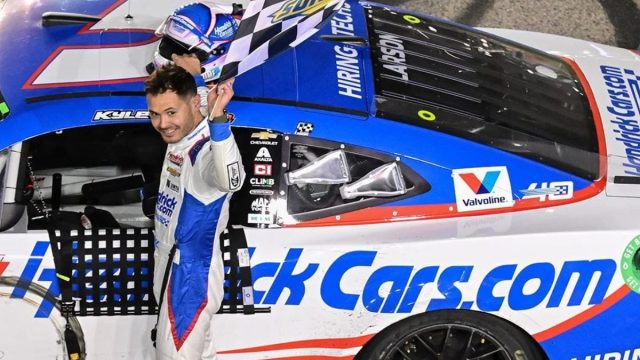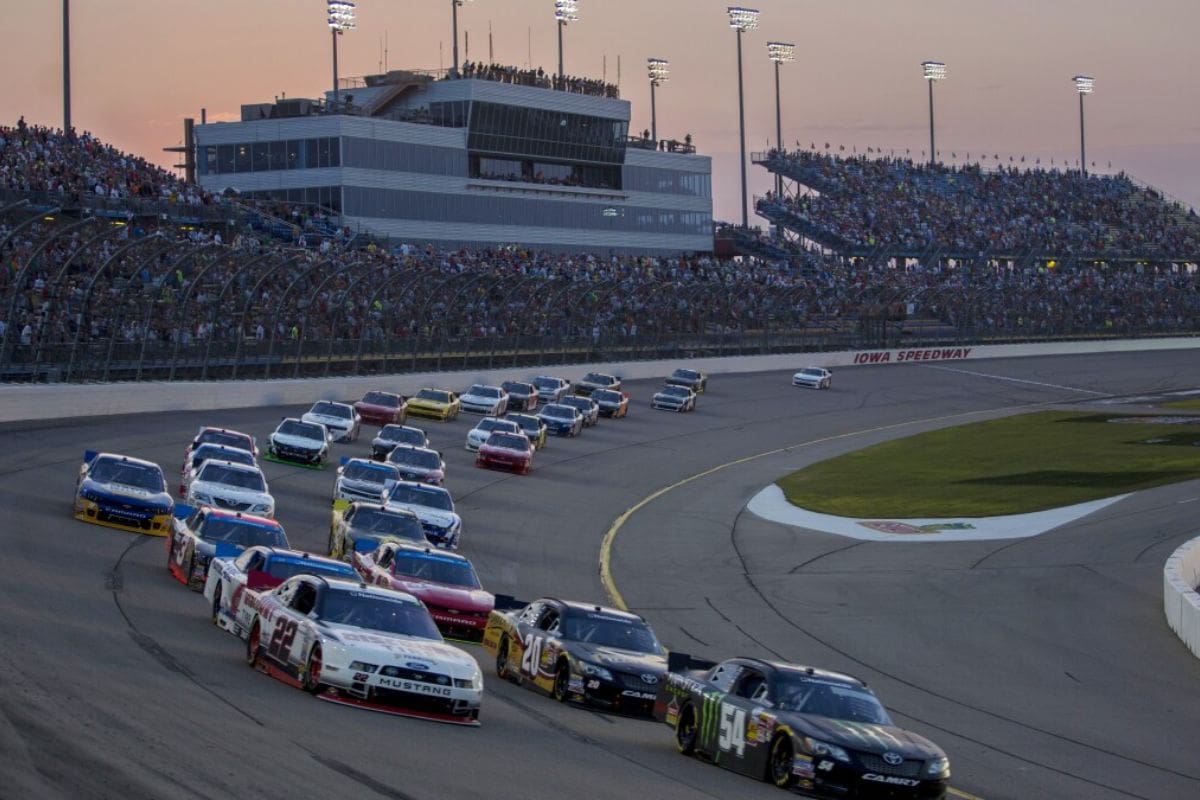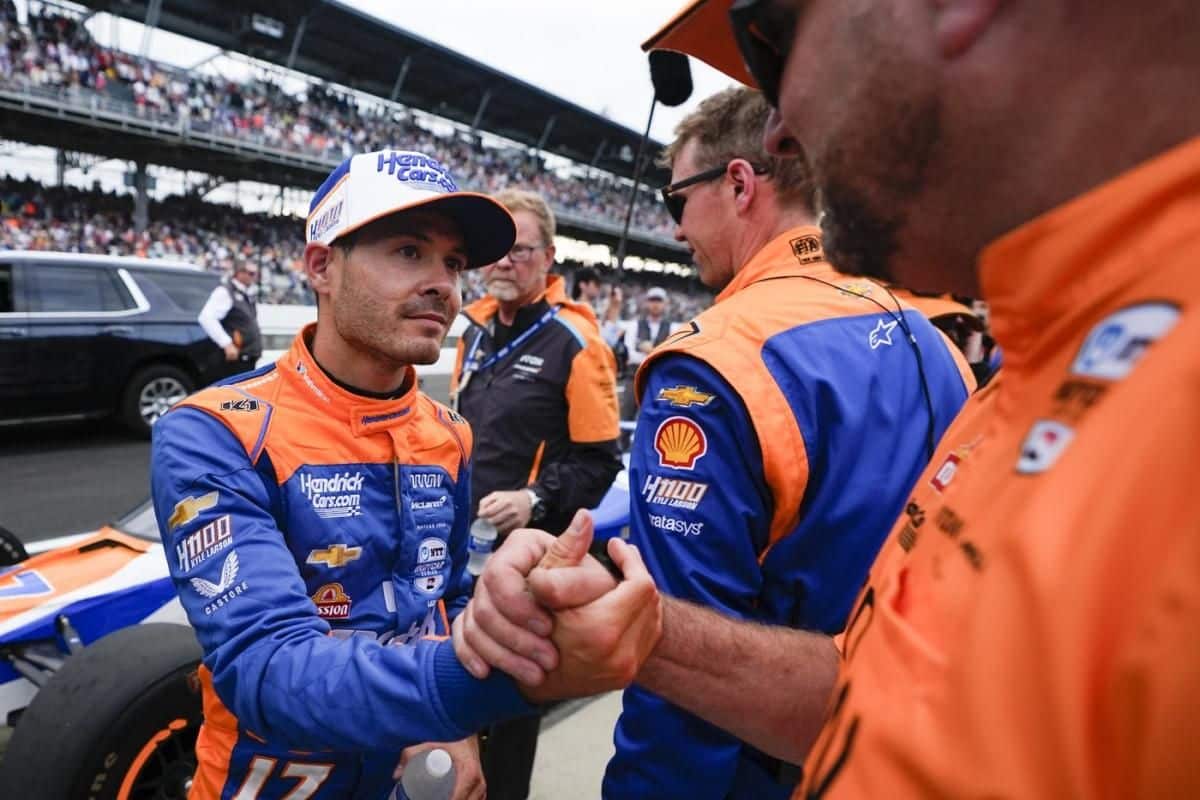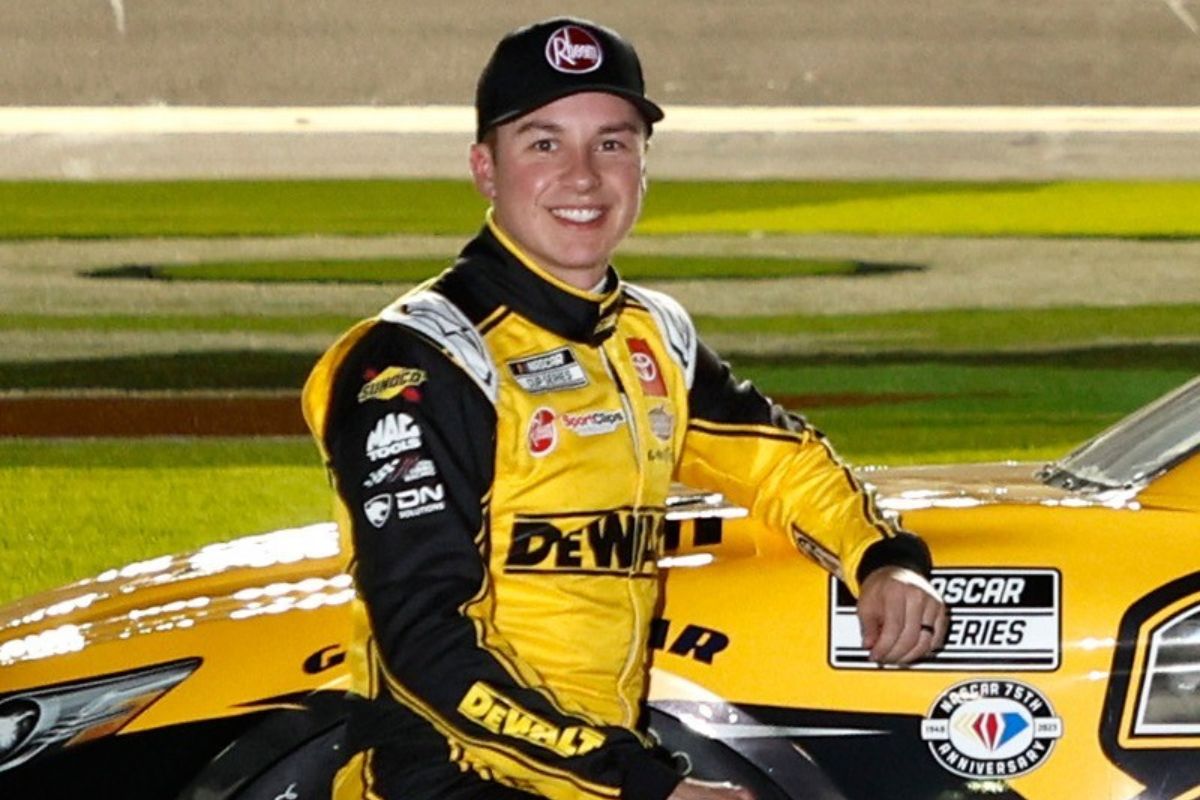Kyle Larson’s Tire Chaos: Kyle Larson‘s crucial hopes at Iowa Speedway turned difficult as tire chaos plagued the NASCAR Cup Series practice. Despite insights from initial tire tests, Larson and his team faced unexpected accelerated tire wear and handling challenges. Unstable track conditions exacerbated tire degradation, requiring frequent pit stops and rapid setup adjustments. Christopher Bell‘s crash due to a tire cut highlighted the reliability issues, prompting NASCAR to implement contingency plans. Larson’s resilience and meticulous team communication remain essential as they prepare for the Iowa Corn 350 race.
Key Highlights
- Kyle Larson’s performance was impacted by significant tire wear issues during practice at Iowa Speedway.
- Larson adapted his strategy using early insights from a prior tire test at the track.
- Despite preparation, Larson faced handling challenges due to evolving track conditions and inconsistent tire performance.
- NASCAR implemented contingency plans to address widespread tire failures, prioritizing safety and race integrity.
- Larson’s resilience and team communication were crucial in navigating the tire chaos and maintaining a positive outlook for the Iowa Corn 350 race.
Tire Problems Plague Practice at Iowa Speedway
The NASCAR Cup Series practice session at Iowa Speedway was overshadowed by significant tire issues, raising concerns about the performance and safety of Goodyear tires on the Next-Gen cars. The practice was affected by accelerated tire wear, which led to handling challenges for numerous drivers. Tires were showing an unusual amount of degradation over relatively short stints, necessitating frequent pit stops and disrupting planned practice runs.
Track conditions at Iowa Speedway have always been a variable factor, given the track’s abrasive surface and the unique demands it places on tires. However, the combination of these conditions with the characteristics of the Next-Gen cars seemed to worsen the tire wear issues. Teams struggle to make adjustments, tweaking car setups and experimenting with different tire pressures in a bid to alleviate the problems. Despite these efforts, many drivers continued to report suboptimal handling, with some even voicing concerns about the potential for tire failures during the race.
Driver reactions to the situation were mixed but leaned toward frustration. Several drivers spoke openly about their difficulties in managing tire wear and the subsequent impact on car handling.
Team engineers and crew chiefs were seen deep in consultation, analyzing data and discussing potential solutions. The emphasis was on making real-time adjustments to make sure that the cars could safely navigate the demanding Iowa Speedway.
Kyle Larson’s Confidence and the Tire Test
Kyle Larson’s confidence in the performance of the Goodyear tires stems from his initial experience conducting a tire test at the 0.875-mile oval, yet the recent practice issues have left even him perplexed. As one of the three drivers selected for the tire test, Larson had the advantage of early insights into how the tires would interact with the unique track conditions of Iowa Speedway. His extensive racing experience, coupled with his skill in tire management, initially suggested a smooth shift into race day.
Larson’s skill behind the wheel is undisputed, as is his ability to communicate effectively with his team. His feedback from the tire test indicated a promising tire strategy, one that would capitalize on the grip and durability of the Goodyear tires. The data collected during the test sessions were carefully analyzed, allowing Larson and his crew to fine-tune their approach for top performance.
However, the unforeseen complications during practice have introduced a new variable to this carefully crafted plan. Larson’s seasoned racing experience allows him to adapt quickly, but the unpredictability of the current track conditions poses a significant challenge. The team’s communication has become even more important as they scramble to understand the root of the tire issues and recalibrate their strategy accordingly.
Despite the confusion, Larson’s initial confidence remains a key aspect of his approach. His ability to read the track and adjust his driving style in real-time will be tested to its limits. The synergy between his skill and the team’s analytical abilities will be vital in maneuvering through this unexpected turn of events.
” I’m sure the tractions probably changed that much since then, which I was very very loose in…Except I wasn’t that loose in the test. The first half a pack I was super loose. But I thought, I felt like we got that a little better, and could start running some comfortable laps. So it trended to get similar to when the test ended.” – Larson
Unexpected Tire Issues During Practice
Despite Larson’s initial confidence, practice sessions at Iowa Speedway revealed unexpected tire issues that left several Cup drivers, including Larson, grappling with severe handling problems on the 0.875-mile track. These complications arose despite prior testing, indicating a significant divergence in track conditions since the last evaluation.
The root of these handling issues appeared to be multifaceted. Tire balance was a primary focal point, as the teams struggled to find the best fit. The tires’ performance was inconsistent, leading to unpredictable grip levels, which significantly affected cornering stability and global vehicle control. This variability in tire behavior was compounded by the evolving track conditions, which seemed to have shifted dramatically since the initial test sessions.
Driver feedback highlighted several critical areas of concern. Larson, along with his peers, noted a marked difference in the track’s feel, pointing to a possible change in the surface composition or temperature fluctuations that might have influenced tire performance. The drivers reported a lack of consistent grip, making it challenging to maintain competitive lap times and necessitating immediate team adjustments to mitigate these issues.
Teams were observed making rapid adjustments in response to the feedback. Alterations in tire balance settings were frequent as they sought to accommodate the erratic track conditions. Suspension tweaks and aerodynamic modifications were also prevalent in the garage area, emphasizing the urgency to address the handling issues before the qualifying rounds.
Christopher Bell’s Crash and Backup Car
Amid the unfolding tire chaos at Iowa Speedway, Christopher Bell’s practice session took a dramatic turn when a cut tire sent him hard into the wall after just 19 laps, necessitating the use of a backup car for the upcoming Iowa Corn 350. The incident highlighted the risks associated with the current tire test, which has already seen several drivers encounter issues with damaged tires.
Bell, a promising JGR driver, had been maneuvering the track with characteristic precision when the unexpected tire failure occurred. The cut tire not only compromised his vehicle’s integrity but also forced his team to resort to a backup car—an outcome that could have a significant impact on his performance in the Iowa Corn 350. The shift to a backup car often entails a multitude of challenges, from setup adjustments to psychological recalibration, all of which Bell and his team must now navigate with dexterity.
“I just did the tire test here three weeks ago, and we did 50 lap runs all day long. I don’t know.” – bell
The incident with Bell was not an isolated case. Four other drivers—Ty Gibbs, Ross Chastain, Austin Cindric, and Tyler Reddick—also reported mysteriously damaged tires during the practice session. Unlike Bell, these drivers managed to retain their primary cars, yet their experiences added to the mounting concerns about tire reliability at the speedway.
Christopher Bell SMACKS THE WALL. 😳
📺 : #NASCAR Cup Series practice on USA Network pic.twitter.com/cPaW2uxJH7
— NASCAR on NBC (@NASCARonNBC) June 14, 2024
The implications of these tire complications are multifaceted. For Bell, the immediate concern is the readiness and performance of his backup car. For the broader racing community, the tire test at Iowa Speedway has become a focal point for scrutiny, potentially prompting an evaluation of tire durability under competitive conditions.
NASCAR’s Contingency Plans and Larson’s Optimism
In response to the recent tire failures and unexpected incidents on the track, NASCAR has implemented a series of backup plans to guarantee the safety and competitiveness of the upcoming Iowa Corn 350, highlighting the resilience and optimism of drivers like Larson who eagerly look forward to the race despite previous setbacks.
“I don’t know. I’m not sure why people are blowing so many tires right now. See, I haven’t had time to talk to the team. I don’t think they’ve had time to, you know, study tires on our end as an organization. So yeah, I’m not really sure what the answer is yet.” – Larson
Kyle Larson, who faced a major disappointment two weeks ago when inclement weather prevented him from participating in the Coca-Cola 600, has shown remarkable optimism. Granted a waiver by NASCAR, the Hendrick Motorsports driver is now focused on executing a well-thought-out strategy to navigate the unpredictable elements of the Iowa Speedway. Larson’s strategy involves leveraging team communication to adapt swiftly to track conditions, a critical component given the weather concerns that have historically affected this venue.
“Honestly, the unknown of everything, I think, makes things exciting and competitive and all that. So yeah, it’s going to be fun.” – larson
The anticipation surrounding race day is palpable, with fans and drivers buzzing with excitement. As teams fine-tune their preparations, the emphasis on clear, effective communication becomes even more important. This ensures that every pit stop, tire change, and strategic move is executed with precision.
News in Brief: Kyle Larson’s Tire Chaos
The tire complications encountered during practice at Iowa Speedway highlight the critical importance of rigorous testing and preparation in motorsport.
Kyle Larson’s initial confidence was undermined by unforeseen tire issues, exemplified by Christopher Bell’s crash necessitating the use of a backup car.
NASCAR’s prompt contingency measures demonstrate the organization’s resilience.
This situation serves as a reminder of the unpredictable nature of racing and the continuous need for adaptation and innovation to guarantee safety and performance.
ALSO READ: Kyle Larson Eyes Another Double Duty at Iowa-Knoxville



